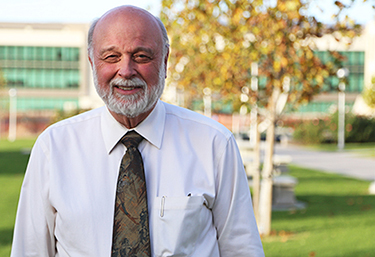 |
| September 2017 |
|
Combating hate in America
Working alongside others with cultural and economic differences helps us serve more effectively
“Hate in America” is how Time magazine’s cover labels it. Other publications have opined in equally categorical ways about the recent tragic events in Charlottesville. What is going on? Where did this all come from? Is it new, or just a “coming out” of long pent up feelings? Whatever the cause, it is ugly and embarrassing for America. Jon Meacham’s thoughtful article in Time traces the long history of racial divides in this country and leads one to conclude that we have never really gotten over the legacy of slavery, of animosity bred by cultural and genetic differences among us. I am particularly concerned when this behavior seems to have Christian overtones, of identification with certain religious viewpoints or ideologies. Really? There can be no more clear evidence that our God views us all as one people, equally fallen and equally loved by Him. The old saying “The ground is level at the foot of the cross” certainly bears on this topic. Probably more important than dissecting the past is addressing the future. What can we proactively do to move beyond both conscious and unconscious biases? Perhaps even more fundamental is examining our own feelings, our own view of the world and those around us. Can we honestly say that we don’t harbor perspectives that impact our own attitudes? And as custodians of our own time and space, what are we doing to purposefully move into a more inclusive view of others? A faculty member recently shared with me an article from the Harvard Business Review (HBR) that documents how common strategies of addressing diversity issues have not worked. For the past 50 years, organizations have developed “affinity groups” or “employee resource groups” to try and encourage their managers and executives to be more inclusive and sensitive to various minority groups, whether racial, gender-based or others. But the results have been dismissal. As one article — “Deloitte’s Radical Attempt to Reframe Diversity” — so powerfully puts it, “Why tell the out-groups they have to figure out how to fit in, instead of teaching the in-groups how to reach out?” This is exactly why Loma Linda University Health has moved to a model where we all own this issue, rather than expect a representative of any particular race or culture to champion their own cause. Our Diversity Council is seeking new ways to make progress on acceptance and inclusiveness across campus. The HBR article tells a story from World War II that documents this issue well. The U.S. Army was still segregated at that time, with only Whites allowed to serve in combat roles. When high casualties left General Dwight Eisenhower understaffed, he asked for Black volunteers to serve in combat duty. Later surveys showed that Whites whose companies had been joined by Black platoons showed dramatically greater willingness to serve alongside Blacks. They came to see each other as soldiers first, as equals pushing toward a common goal. For me, this is why the service motif is so powerful as an educator. When I can work alongside other people, I begin to understand and accept their worldview. I come to see that what I may have thought was a limitation may be their strength. What I may have seen as my advantage may not be of much value in their world. Father Greg Boyle, founder of the gang-member intervention non-profit organization Homeboy Industries in Los Angeles, has a great quote: “Here is what we seek: A compassion that can stand in awe at what the poor have to carry, rather than stand in judgment at how they carry it.” Likewise, when Loma Linda University sends students and faculty into San Bernardino or around the world, we are, in fact, providing teachable moments for ourselves that can lead to new understandings and perspectives on the reasons behind the differences we see. One of my favorite drives in all my travels is the 30-minute to two-hour drive from the airport in Port-au-Prince, Haiti, to our little hospital across town. Going from a “comfortable” airline seat to the crowding, noise, garbage, smells, potholes, traffic, and the life of this bustling city quickly anchors me once again in the realities of this world. As we honk our way past the crowded open market, by roadside vendors and over plugged waterways, I have often asked myself, “Where would I start if I was mayor of Port-au-Prince? How would I bring about change without damaging the resilience and joy that these people manage every day?” I quickly conclude that my solutions would probably be counterproductive, though perhaps satisfying to me. Only by listening and understanding could one come up with a strategy for lasting change. In this Notes, I have purposefully conflated the American challenge with the world’s struggles because I see them as all related. International exposures bring subtle American biases into stark relief. It is why “mission trips” are more for the traveler than those to be “served” as we try to decipher ourselves. And it is why Loma Linda University Health puts such an emphasis on working across cultural and economic boundaries in our quest to understand, accept, and serve effectively. Perhaps it is time we examine ourselves and realize that overcoming our biases is more than an exercise in guilt mitigation. Our efforts to embrace others must be driven by a conviction that this is what God wants us to do.
Richard Hart, MD, DrPH
|
September 6, 2017
Notes from the President — Combating hate in America
Share


